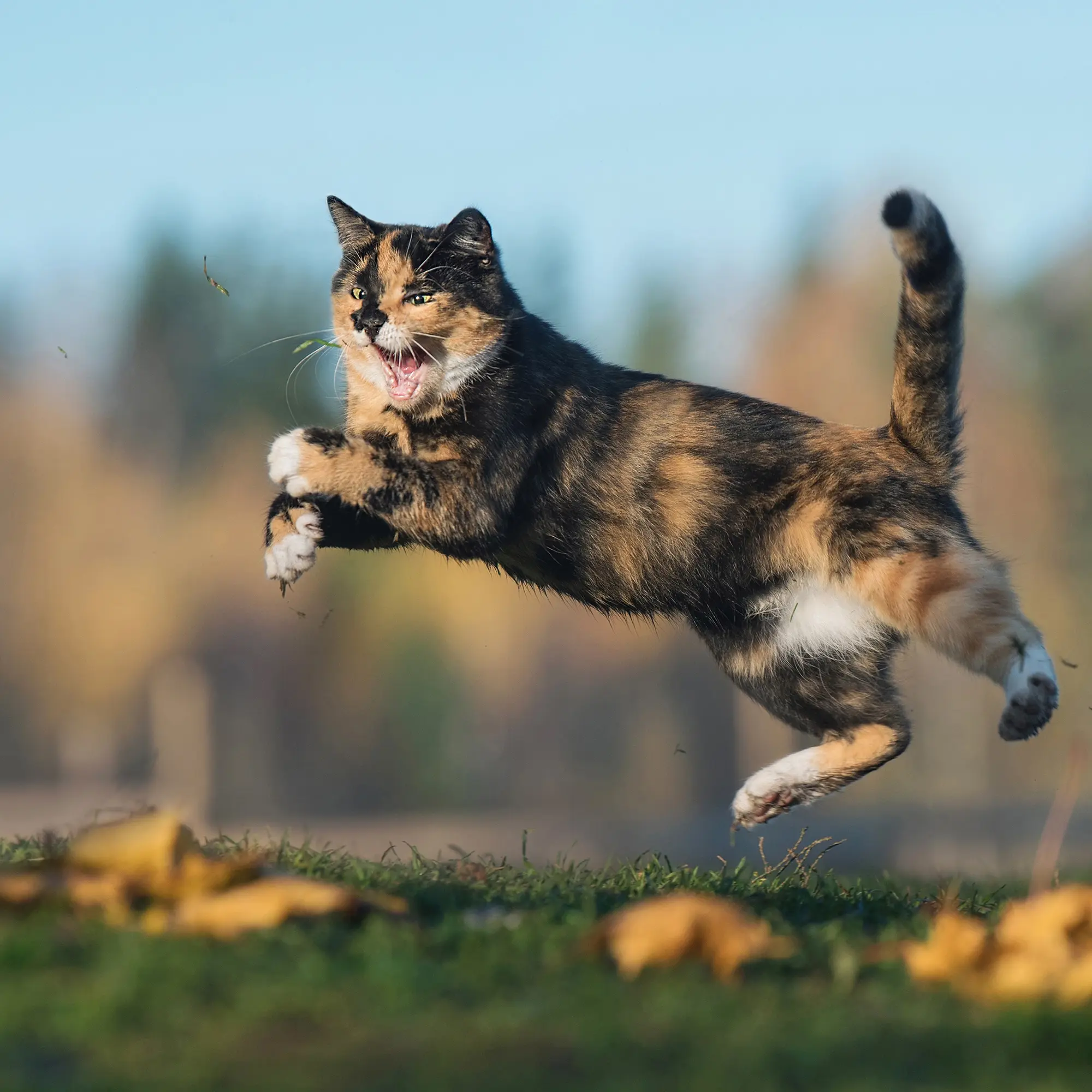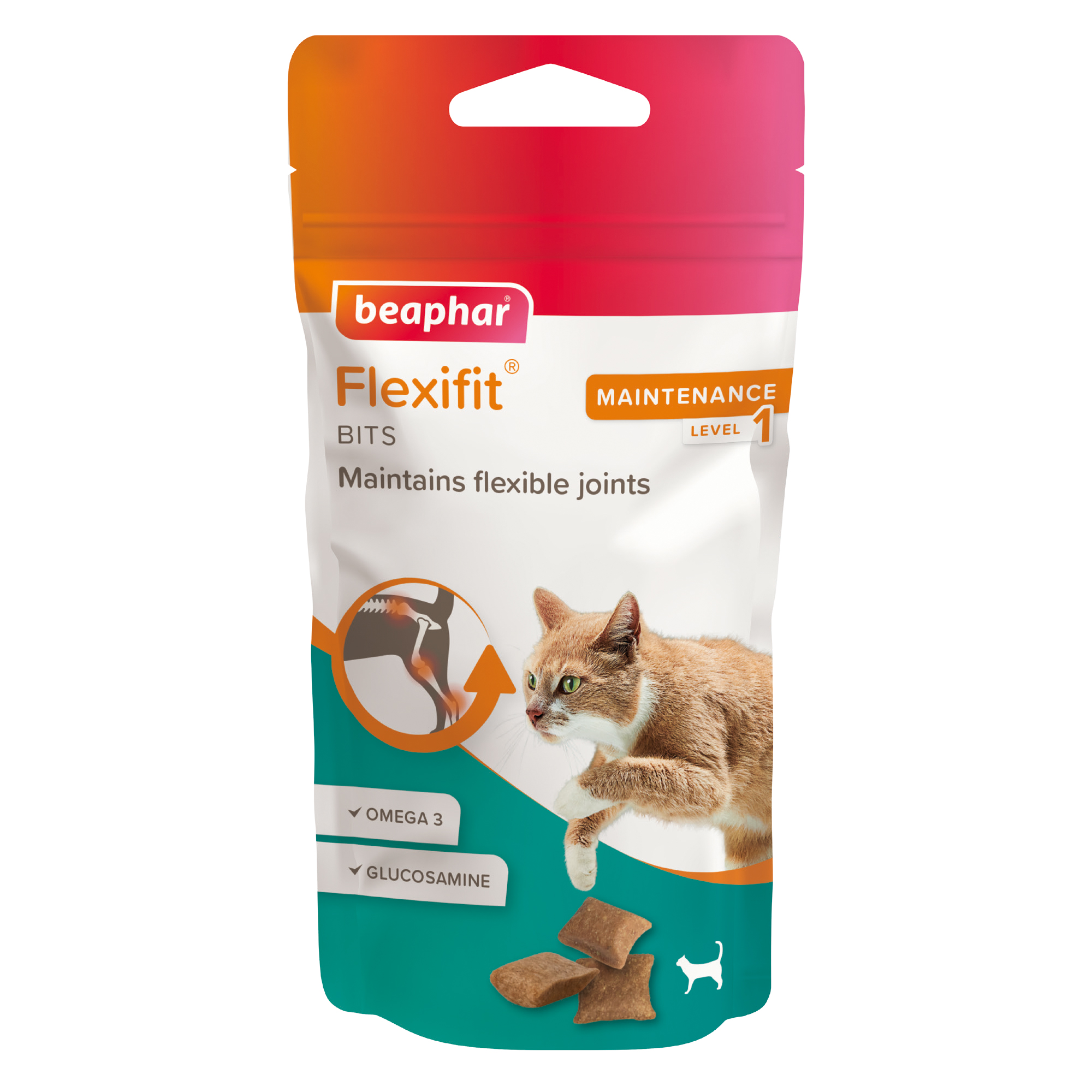Cats and arthritis: what to look for and how to help
Cat joint problems are common. In fact, by the age of six, well over half of cats have signs of arthritis on x-ray1 and this rises to a staggering 90 percent of cats over 12.2 So how will you know if your feline friend is affected? When it comes to cats and arthritis, we’ve got you covered. Read on for all you need to know about spotting the early signs of arthritis, the best cat joint support and more.
What are the early signs of cat joint problems?
Cats are masters of disguise, a trait inherited from their stoic, self-sufficient hunter ancestors. While they’re quick to let you know when it’s dinner time or when they are looking for a comfy lap to snooze on, our feline friends are not so good at telling us about aches, pains and stiff joints, and important part of cat joint health.
In the early stages, the signs (or symptoms) of cat joint problems can be subtle. For example, a cat with early joint problems might just take the strain off their limbs by sleeping more and you might start to notice that they hesitate before jumping over the garden fence. Or they might become a bit less tolerant; a hiss when they are picked up, or a grumble when they are stroked. Knowing what is normal for your cat will help you spot when things go wrong.
How do I tell if my cat has arthritis?
Cat joint problems are more common than you might realise in cats, and arthritis is no different. But just like other joint problems, the early signs of arthritis in cats can be tricky to spot. Here are some of the signs that you might see and as the condition progresses these signs may become more noticeable:
- Stiffness, especially after rest
- Reduced grooming – particularly towards the tail as movement becomes more uncomfortable
- Changes in temperament
- Reduced interest in playing
- Hesitation before jumping
- Limping
- Loss of muscle
Cats and arthritis: can I give my cat joint supplements?
If you suspect that your cat may have arthritis or another joint disease, you may wonder, can I give my cat joint supplements? The answer is yes. In fact, alongside keeping your feline friend at a healthy weight, starting cat joint support supplements early is one of the best things that you can do.

The best joint supplements for cats
If you’re considering adding supplements to your cat’s diet, there are a few things to keep in mind. Firstly, the best joint supplements for cats need to be super-tasty. Ever tried to give a tablet to a cat that doesn’t want to cooperate? It’s not easy! That’s why a palatable paste can be a good option. Flexifit® paste can be mixed with food and it’s so tasty that many cats will also take it directly.
Secondly, the best joint supplements will contain ingredients that help support healthy joints, such as glucosamine. Glucosamine for cats is a building block of cartilage and it gives cartilage strength, structure and shock-absorbing properties.
You may also have heard of omega-3 fatty acids, like EPA and DHA. Omega-3s have a natural anti-inflammatory action and may help improve mobility and even reduce the need for pain relief in animals with joint disease.3 Flexifit® Paste contains both glucosamine and omega-3 to help support your cat’s joints.
When should I start giving my cat joint supplements?
Prevention is always better than cure and you can start giving your cat joint supplements at any age, including when they are young. But equally if your cat is starting to show signs of joint disease, it’s never too late to start joint supplements. The key thing to remember is that you don’t need to wait until your cat is limping or becoming less mobile to take action.
My cat is limping, what should I do?
There are many possible causes for limping or lameness in cats. However, when us humans limp, it is almost always because something hurts and for cats it’s just the same. If you have noticed any unusual signs or are concerned about your pet’s health, it’s best to seek veterinary advice.

How long can a cat live with arthritis?
When it comes to cats and arthritis, the good news is that with the right care, your four-legged friend can continue to lead a long and happy life. If you are looking for more tips to support your cat’s joint health, check out our article on <how to support your cat’s joint health for life.>
References
- Keller, G.G. et al. (1999) Hip dysplasia: a feline population study. Vet Radiol Ultrasound. 1999;40(5):460-464
- Loder, R.T. & Todhunter, R.J. (2018) Demographics of hip dysplasia in the Maine Coon cat. J Feline Med Surg. 20(4):302-307
- Roush, J.K. et al (2010). Evaluation of the effects of dietary supplementation with fish oil omega-3 fatty acids on weight-bearing in dogs with osteoarthritis, J Am Vet Med Assoc 236(1): 67-73
Find detailed strategies for preventing and treating pet joint issues by visiting the Beaphar Joints Hub.




